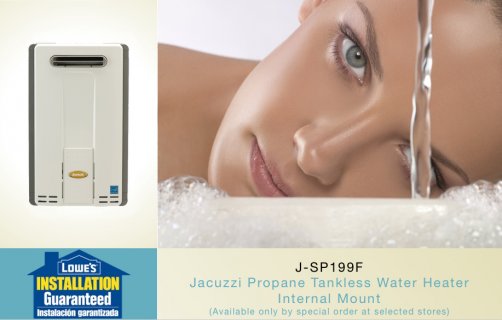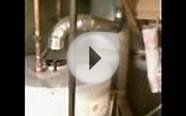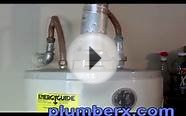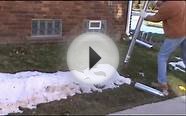
Jacuzzi water heater vent Pipe
Choosing a tankless water heater can be intimidating. Both the volume of information and the number of technical specifications can make it difficult to find the right one for you. One common question when selecting a tankless water heater is what type of venting is most appropriate for your application. While there really is no right or wrong answer there are some ways to help you choose the option that will suit your needs best.
Like anything with a flame, air is essential in supplying the oxygen needed for the combustion process. In a tankless water heater the precise control of air flow to the burner, as well as the exhaust rate from the appliance is essential for it to operate at peak efficiency. Over time, environmental and natural occurrences can change the air flow causing imperfect combustion which wastes energy, can be potentially hazardous and is environmentally destructive. Many indoor (non direct vent) installations can suffer from the intake of contaminated air from within the home. One common issue for gas appliances installed indoors in cold climates is that a lack of combustion air (air used to keep the flame burning), entering the building can cause a negative pressure in the building. This causes cold air to be pulled down through a vertical or horizontal flue. In the case of a tankless water heater this causes freezing damage which can be expensive to repair. Direct vent models are isolated from the inside of the home and eliminate both of these possibilities.
While this is just one example, there are many factors to consider when choosing the vent type for your application.
Non Direct Vent Indoor (Fan Assisted)
- Uses an electric fan (or blower) to push flue gases to the outdoors.
- Pulls oxygen needed for combustion from the inside space.
- Fan assisted indoor gas appliance design allows for horizontal or vertical venting.
Direct Vent Indoor (Fan Assisted Sealed Combustion)
- Combustion air is supplied to the gas burner directly from the outdoors.
- The heater itself has a sealed cover and does not use any air from the space where it is installed.
- Two pipes, or one concentric pipe (pipe within a pipe) opening, run from the water heater through the wall or roof of the home; one for exhaust, one for fresh air intake.
- Used where tight construction may cause various appliances to compete for the same air.
- Can be vented vertically or horizontally.
Outdoor
- Water heater receives combustion air from the environment around it and expels exhaust the same way.
- We recommend these models for warm climates only.
Now that you have a basic idea of the things to consider when choosing a vent type, feel free to give us a call with any further questions or go ahead and place your order online. For more information visit the "Educate" section of our site, or scroll down to see examples of each type of water heater.
You might also like




|
7' x 8' Spa Solar Blanket Lawn & Patio (SplashNet)
|

|
85K BTU Stainless Steel Pool / Hot Tub Heat Exchanger - Outdoor Wood Boiler Home Improvement (American Royal)
|





